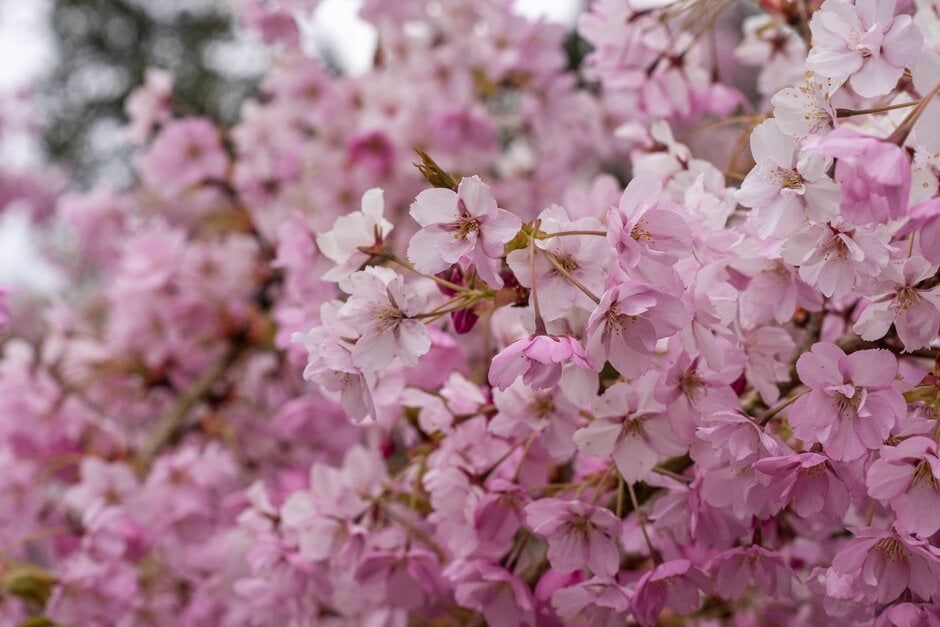Prunus 'Matsumae-usugasanesomei'
cherry 'Matsumae-usugasanesomei'
Very free-flowering, spreading, deciduous tree about 5m tall. In spring, as the leaves emerge, it bears clusters of semi-double incurved flowers to 2.5cm across, that open pink, becoming paler pink with age. The new foliage is bronze-flushed as it unfurls, green in summer, and turns yellow and orange before falling in autumn
Size
Ultimate height
4–8 metresTime to ultimate height
5–10 yearsUltimate spread
4–8 metresGrowing conditions
Moisture
Moist but well–drained, Well–drainedpH
Acid, Alkaline, NeutralColour & scent
| Stem | Flower | Foliage | Fruit | |
| Spring | Pink | Bronze Green | ||
|---|---|---|---|---|
| Summer | Green | |||
| Autumn | Yellow Orange | |||
| Winter |
Position
- Full sun
Aspect
East–facing or South–facing or West–facing
Exposure
Sheltered Hardiness
H6Botanical details
- Family
- Rosaceae
- Native to GB / Ireland
- No
- Foliage
- Deciduous
- Habit
- Bushy, Spreading branched
- Genus
Prunus can be deciduous or evergreen trees or shrubs with showy flowers in spring, and often good autumn foliage colour. Some have edible fruit in autumn, and a few species have ornamental bark
- Name status
Accepted
How to grow
Cultivation
Grow in moderately fertile soil in full sun
Propagation
Propagate by chip budding or grafting, although softwood cuttings in early summer with bottom heat can be successful
Suggested planting locations and garden types
- City and courtyard gardens
- Cottage and informal garden
- Wildlife gardens
- Flower borders and beds
Pruning
Pruning group 1. Prune in mid-summer if silver leaf is a problem
Pests
May be susceptible to caterpillars, leaf-mining moths and bullfinches
Diseases
May be susceptible to peach leaf curl, silver leaf, bacterial canker, blossom wilt and honey fungus
Get involved
The Royal Horticultural Society is the UK’s leading gardening charity. We aim to enrich everyone’s life through plants, and make the UK a greener and more beautiful place.
